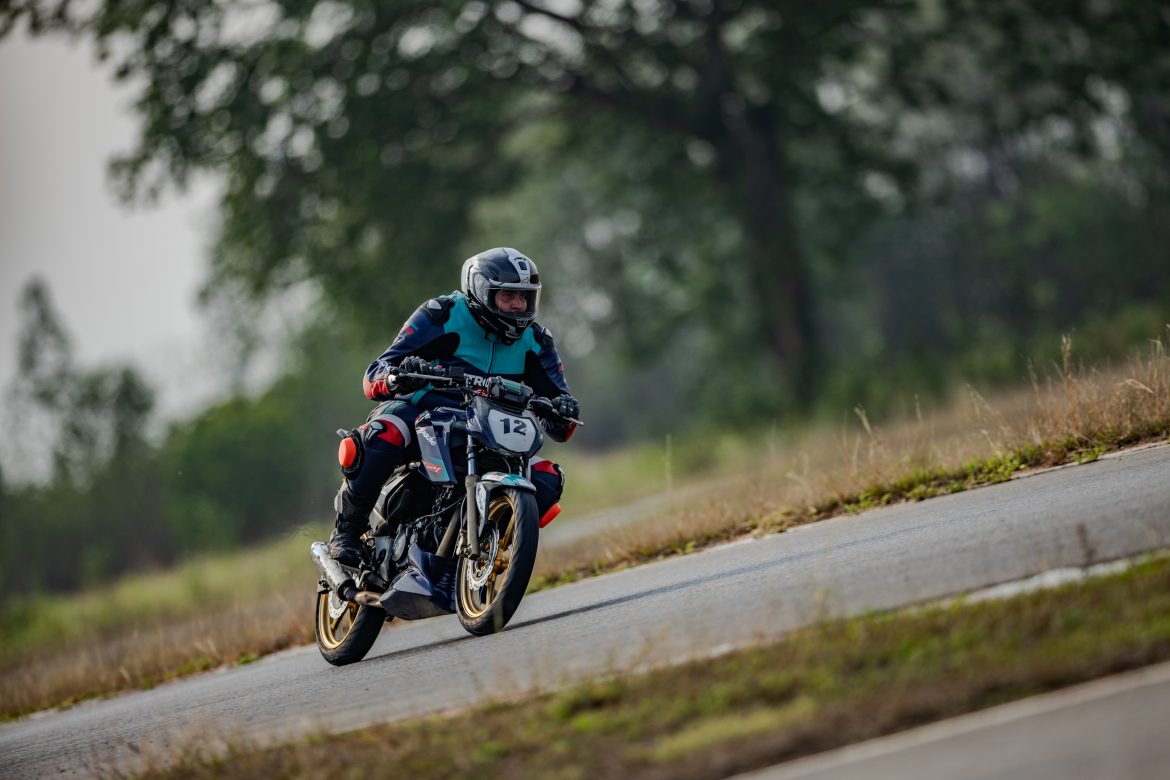We attended the eighth edition of TVS Racing’s Young Media Racer Program, which presents a unique opportunity to the fellow riders of the automotive journalism industry to learn the nuances of racing and compete in a safe and fair ground with equal machinery. Here is everything that I unlearned and then learned during the practice and qualifying round of the racing program.
I didn’t have any prior track experience and I went to attend the program with a clean slate and the general knowledge about motorcycling I learnt over the years. You will later find out if that knowledge helped me during the course or backfired. Let’s start with the basics first, shall we?
The playground
Our playground for this activity was the Madras International Circuit, also known as MMRT. Before hitting the track, we were made to sit in a classroom session in order to understand the layout, flags that will be waved off on various occasions during the session and racing lines. Since it was a level 1 program, the instructions and guidelines were moulded for a common person’s understanding.
There are essentially nine types of racing flags — green flag for start of the session, chequered flag for the session ending, red flag for session halt, yellow flag for caution, black for disqualification (rider specific), blue flag for overlap, yellow and red flag for slippery track surface, white flag for safety vehicle and lastly, orange and black flag for mechanical issue (rider specific).
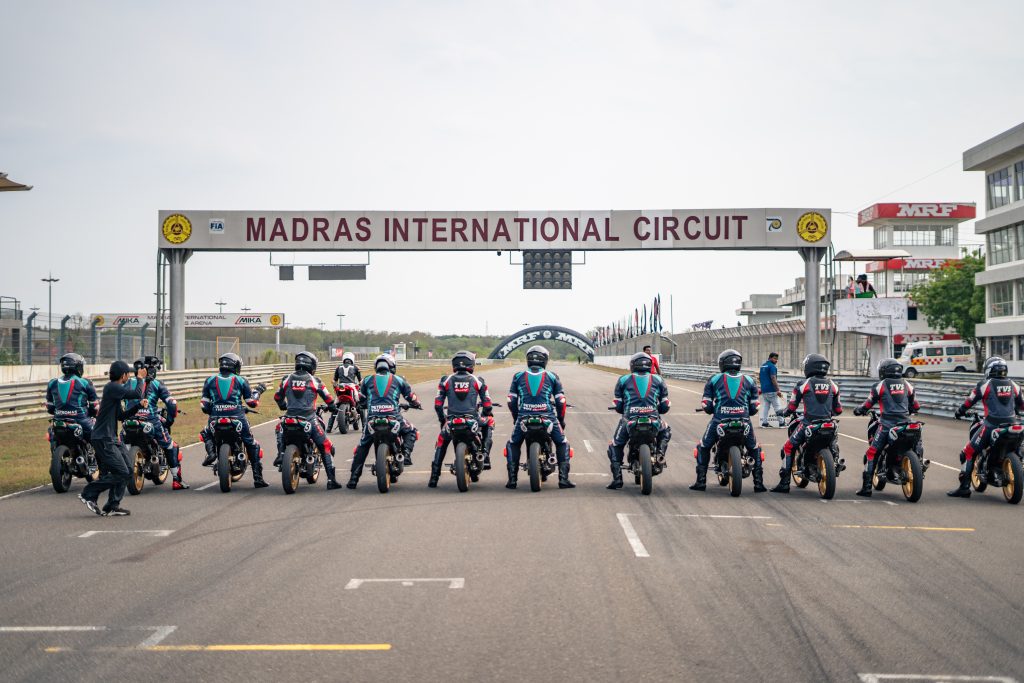
While racing flags like green, chequered and yellow are of common understanding, the latter has two communications, single yellow flag and double yellow flag indicating the degree of caution on the track, respectively. In addition, riders are not allowed to overtake during the yellow flag and maintain a steady pace around the circuit. The rider specific flags namely black, blue and orange and black are shown with the rider number, communicating the message to the respective rider.
The instructors also shared the hands-on experience about body posture, which includes straight-line-, braking- and cornering-specific postures. Upon hitting the straights, we were asked to tuck down our head and maintain a steady posture with our elbows tucked in. Taller riders benefitted from sliding the back towards the end of the rider seat, and in some cases, sliding to the pillion seat as well.
The costume
As a prerequisite on a race track, all riders have to carry single piece racing suits. The regular road-worthy riding jacket and pants don’t comply with the racing regulations. For those riders who didn’t have their riding suits, TVS arranged the necessary gear like in the prior seasons. What’s different with season 8 of the YMRP was the introduction of Alpinestars TechAir 5 airbag vest. TVS recently shook hands with Alpinestars to launch its range of riding gear and used the platform to demonstrate the airbag rider protection while setting a new benchmark in the racing community among other OEMs.
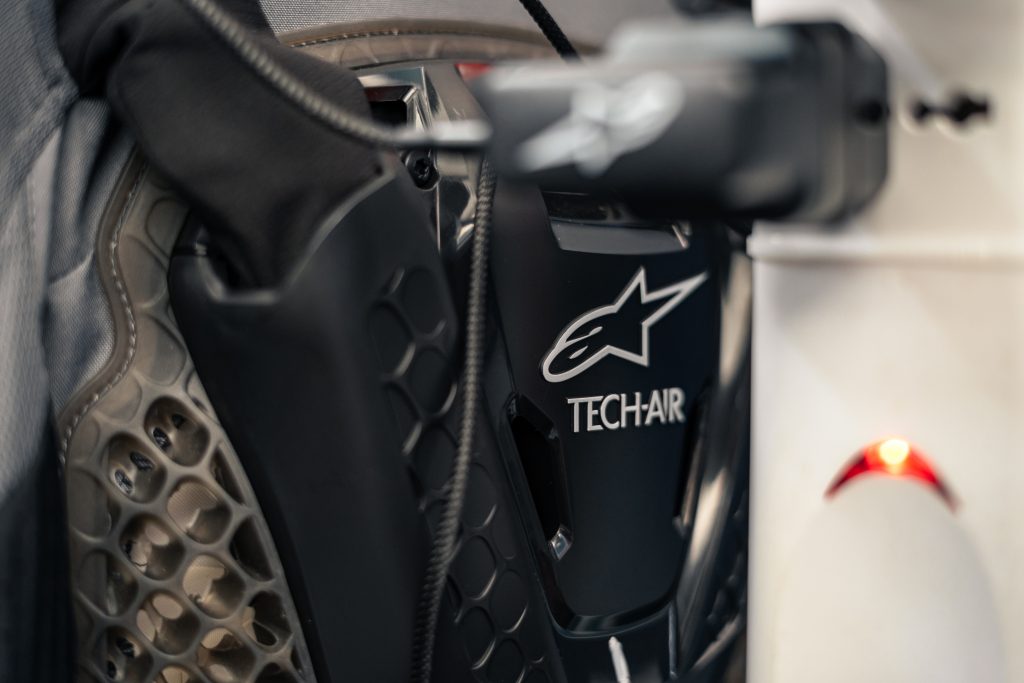
Speaking further about the airbag vest, it uses a plethora of advanced sensors and algorithms to monitor the event of crash and accordingly deploy the airbag. The vest protects the rider by deploying the airbag, thereby acting as a cushion between the rider and the track surface. Alpinestars claims that the airbag vest can reduce the impact force by 95% compared to a passive protection. Since it’s worn as a vest, wearing the racing suit with chest protectors is necessary. The racing gear is completed with racing gloves, boots and an FIM-approved helmet.
The unlearning
Upon hitting the track, we were put through a training session, consisting of racing line instructions, launch start practice and braking. In order to understand the racing lines, the instructors had marked the checkpoints with duct tape forming a cross on the surface. We were asked to hit the markers and follow the racing line, thereby carving the track optimally.
During track riding, the rider goes through a series of changes, the flowing track changes directions which requires leaning, downshifting, body positioning and braking. All of that can overwhelm the rider and hence, we were asked to cruise in 4th gear following the instructor and relying on engine braking for slowing down. This helped me particularly in understanding the positioning of the motorcycle around the various corners of the race track, given the markers will be removed during the practice and qualifying sessions as the duct tape can pose safety concerns.
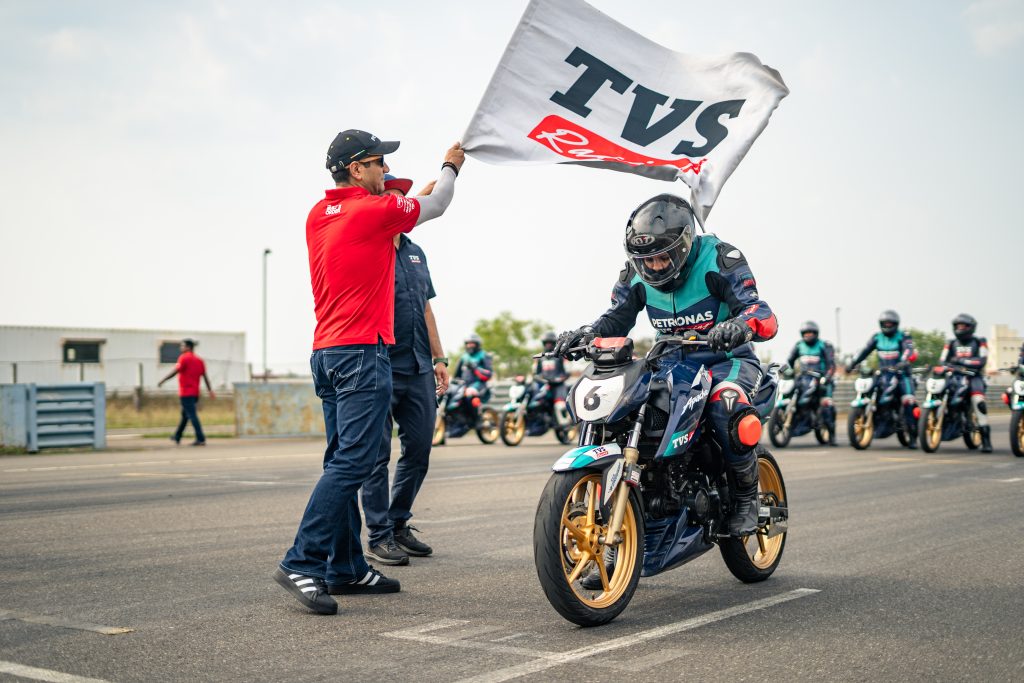
Moving to the launch and braking drill, the instructors briefed about the starting sequence. Launching a motorcycle on a race track requires the rider to respond to the red lights that are placed on the starting grid and dump the clutch as soon as the lights go off. To get the best launch off the line, engaging the clutch halfway, building engine revs and loading up the front wheel with brake pressure is necessary. While it may sound like a checklist task, finding the harmony while dumping the clutch and ensuring that everything happens seamlessly comes to you with a lot of seat time and practice.
The weapon
As I mentioned earlier, the program enables the riders to compete on a common ground with a common machinery. Our weapon for the program was the race-prepped TVS Apache 200 4V, which went through a series of changes in order to comply with the racing environment.
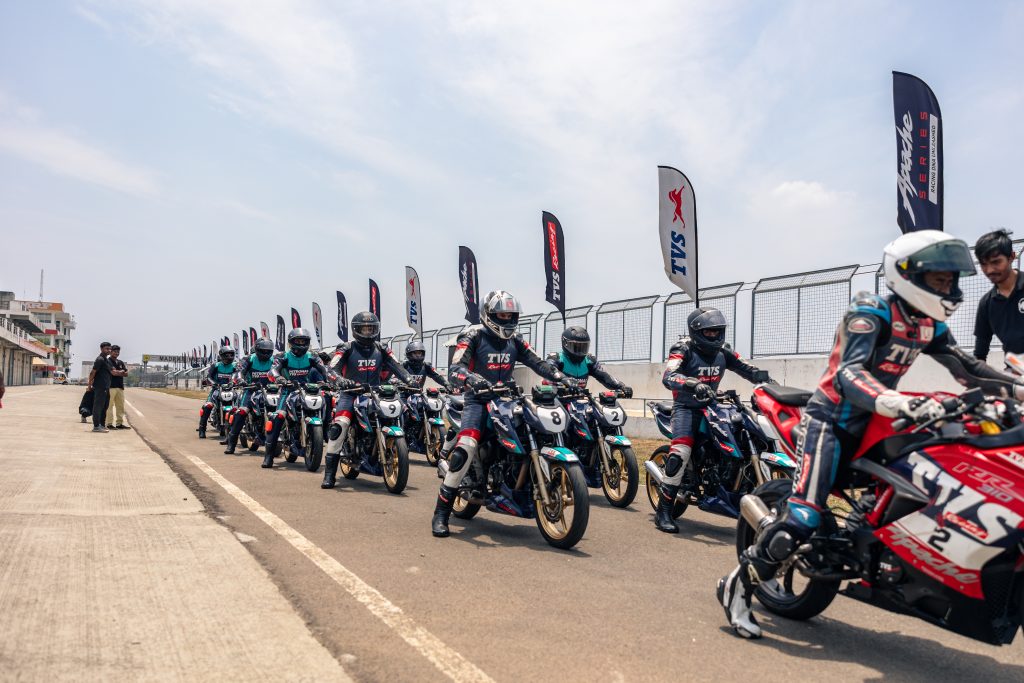
Firstly, the headlight was covered with a vinyl wrap, ensuring that the glass doesn’t shatter into pieces during an accident. Additionally, the motorcycle boasted high-lift cams for the engine, a free flow exhaust, lighter alloy wheels with champagne gold paint, recalibrated suspension and TVS Eurogrip racing tyres. All the small changes made a huge difference on the track, boosting the performance of the Apache 200 while taking its agility to a new level, which induced loads of confidence when pushing to the last bit of tarmac around the track.
The learning
Once we were done with the theoretical and practical briefing, it was time to go unhinged and put all the natural race crafts and instincts to test. I would be lying if I say I wasn’t feeling like Rajini Krishnan before heading to the race track. The confidence was heightened to the next level and the adrenaline was pumping out of my veins in the unforgiving temperature of Chennai. Drenched with sweat under the racing suit, we spread across the race track to find that perfect lap, which would mark our entry to the forthcoming racing of the program.
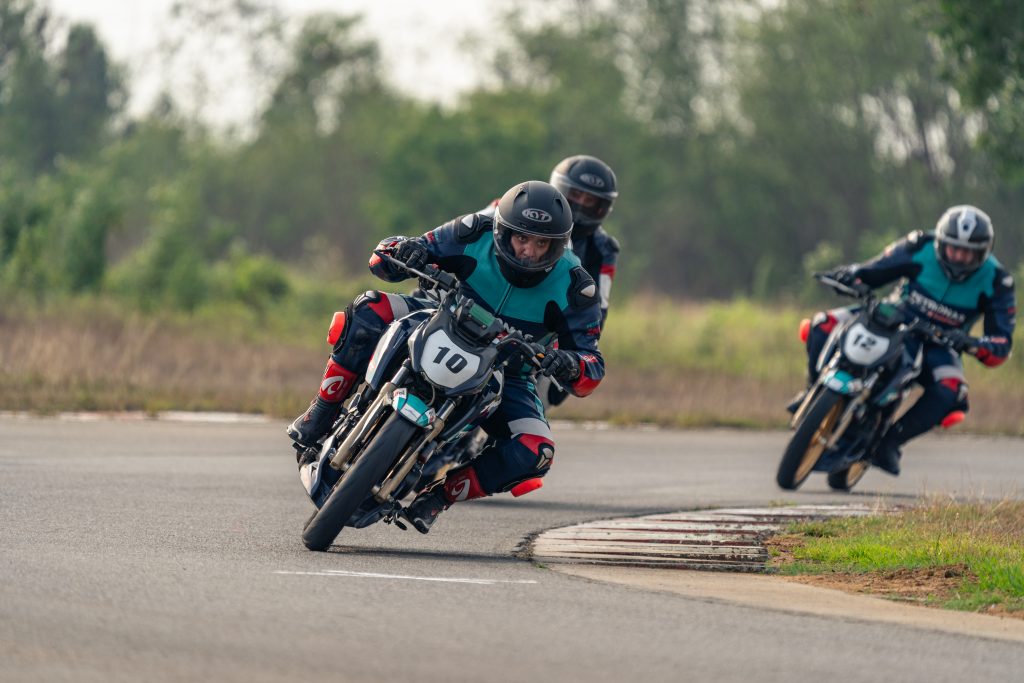
Before heading to the details, let me make it clear that I was severely overweight, heck, I still am. At 102 kg and 6’1” frame, I am not considered the apt fit for a 200cc race bike. And the effect of my generous weight was clearly evident once I was put abreast to the fellow riders. On the back straight of the circuit, I was left to eat dust of the lighter and faster riders.
While weight played a considerable role, I would use it to mask my lack of confidence and race craft. It was only after the session that I realised the potential I could have reached only if gone a bit more aggressive around certain corners. Showing more confidence in the motorcycle and trusting my instincts would have helped me immensely. But the fear of bruising myself held me back and as a result, I missed the qualifying with one place. Yes, I qualified 17th — one short of the 16 lucky candidates who found their way into the program.
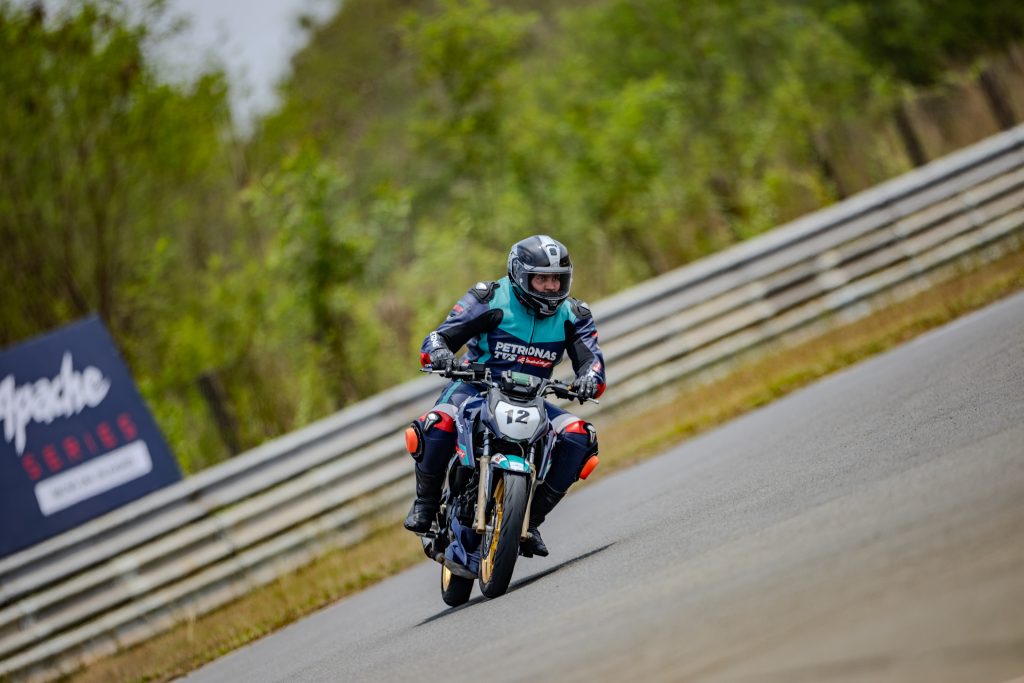
The second chance
The thought of not performing to my best was itching me and leaving me disappointed in myself. What if I could have gone that little harder, braked a little deeper, leaned a little farther — WHAT IF? Well, I guess I will find that out now. Out of those lucky 16 riders who got selected, one rider backed off at the last moment, presenting me with a wild card entry into the program. I couldn’t be happier about the fact that I will get the chance to revisit the holy circuit and expand my horizon. I will surely keep you posted about the proceedings. Stay tuned!

